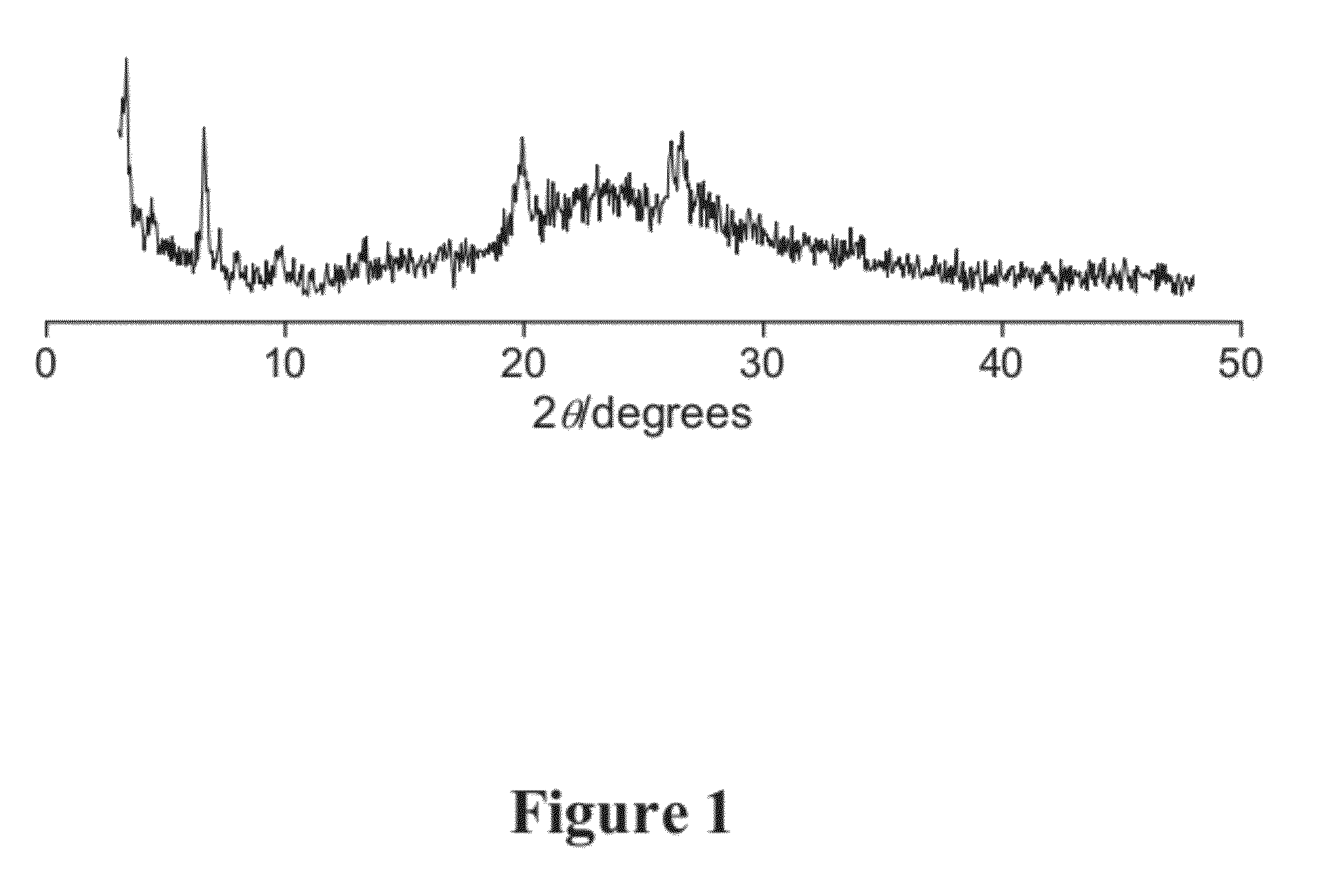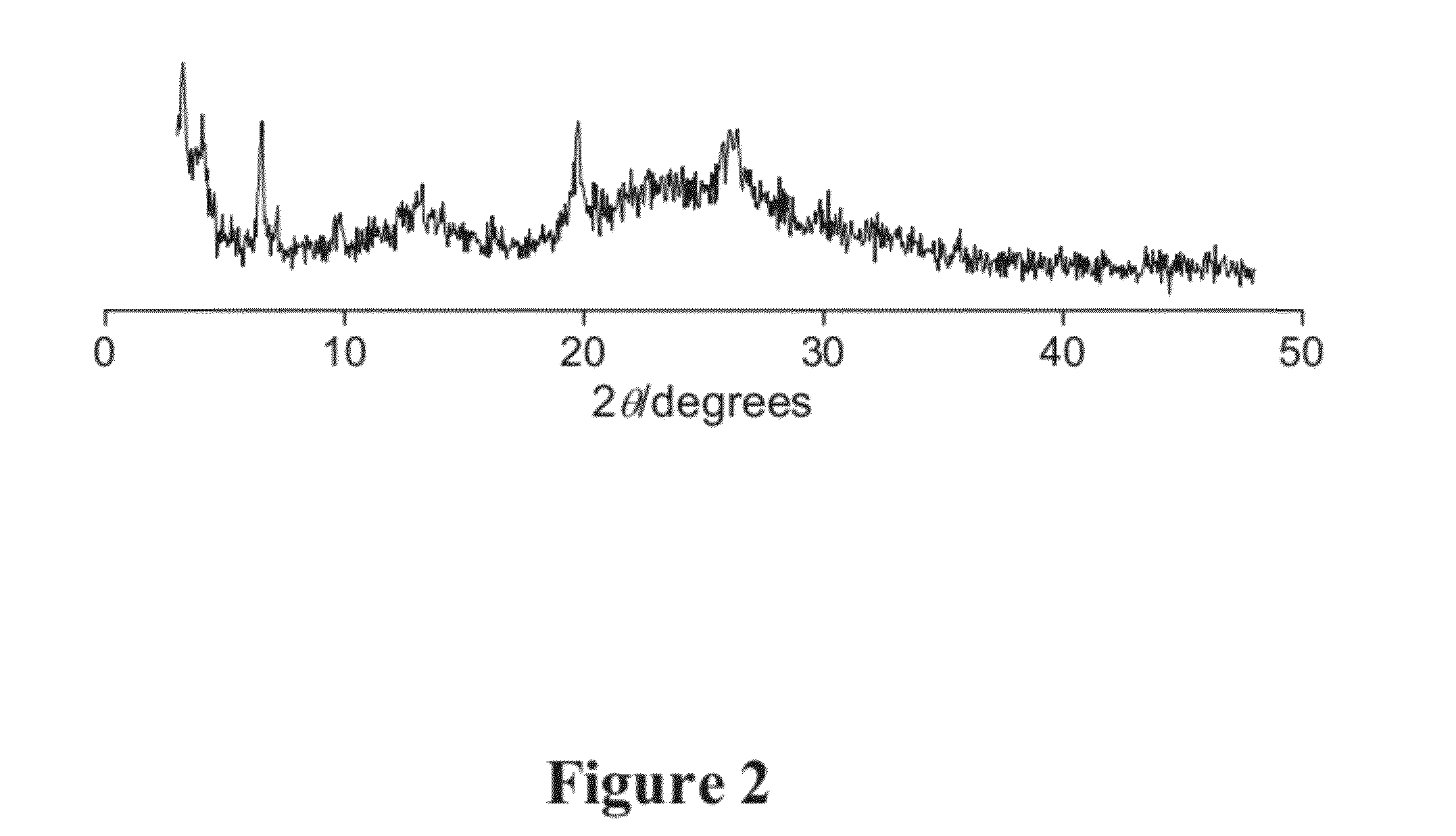Novel oxide materials and synthesis by fluoride/chloride anion promoted exfoliation
a technology of fluoride/chloride anion and oxide materials, which is applied in the direction of catalyst activation/preparation, silicon compounds, physical/chemical process catalysts, etc., can solve the problems of high cost, inconvenient sonication operation, and inability to achieve delamination, etc., and achieve high structural integrity and unique morphology
- Summary
- Abstract
- Description
- Claims
- Application Information
AI Technical Summary
Benefits of technology
Problems solved by technology
Method used
Image
Examples
example 1
[0071]Materials. All reagents used in the zeolite synthesis and delamination were of reagents grade quality and used as received. USY zeolite used in N2 gas physisorption was received from Zeolyst International (CBV760, Si / Al ratio of 60). TON zeolite was synthesized at Chevron Energy Technology Company.
[0072]Synthesis of MCM-22 (P). The zeolite was synthesized by the literature method. Fumed silica (Sigma Aldrich, 3.54 g) was added to an aqueous solution containing sodium hydroxide (EMD Chemicals, 97%, 0.372 g), hexamethyleneimine (Sigma Aldrich, 99%, 2.87 g), and sodium aluminate (Riedel-de Haen, 0.108 g) in deionized water (46.6 g) under vigorously stirring. After stirring the mixture for 6 h, the gel was divided into four portions and each portion was loaded into a Teflon-lined Parr reactor (23 mL). Each reactor was tightly sealed and heated in a convection oven at 408 K for 11 days with tumbling of the reactor. After 11 days of heating, the reactors were cooled down to room tem...
example 2
[0077]Delamination of MCM-22 (P) without Chloride. Delamination of MCM-22 (P) was attempted under similar conditions to those described above, except without tetrabutylammonium chloride and with twice as much as tetrabutylammonioum fluoride. The delamination was not successful. See FIG. 1.
example 3
[0078]Synthesis of ERB-1. ERB-1 was synthesized by the literature method. (Millini, et al., Microporous Materials, (1995) v. 4, p. 221). Sodium hydroxide (EMD Chemicals, 97%, 0.653 g) and piperidine (Sigma Aldrich, 99%, 6.360 g) were dissolved into deionized water (16.228 g). Boric acid (J. T. Baker, 4.396 g) was added to the mixture, and the whole mixture was stirred at 323 K until the boric acid was completely dissolved. After cooling down the solution to room temperature, fumed silica (Sigma Aldrich, 3.300 g) was added gradually over 1 hour. The whole mixture was stirred for an additional 5 h, and divided into half. Each gel was transferred into a Teflon-lined autoclave (Parr instrument, 23 mL). Each reactor was tightly sealed and heated in a convection oven at 448 K for 7 days with tumbling of the reactor. After 7 days of heating, the reactors were cooled down to room temperature, and the product was separated by centrifugation. The separated product was washed with deionized wa...
PUM
| Property | Measurement | Unit |
|---|---|---|
| Temperature | aaaaa | aaaaa |
| Temperature | aaaaa | aaaaa |
| Temperature | aaaaa | aaaaa |
Abstract
Description
Claims
Application Information
 Login to View More
Login to View More - R&D
- Intellectual Property
- Life Sciences
- Materials
- Tech Scout
- Unparalleled Data Quality
- Higher Quality Content
- 60% Fewer Hallucinations
Browse by: Latest US Patents, China's latest patents, Technical Efficacy Thesaurus, Application Domain, Technology Topic, Popular Technical Reports.
© 2025 PatSnap. All rights reserved.Legal|Privacy policy|Modern Slavery Act Transparency Statement|Sitemap|About US| Contact US: help@patsnap.com



